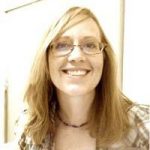
Willow Dawn Becker
 Interviewing Peter Langman: Forensic Psychology Career Profile
Interviewing Peter Langman: Forensic Psychology Career ProfileDr. Peter Langman is a counseling psychologist, but his story shows how an interest in a specific area of psychology can send a career in an entirely new direction – like doing research into school shooters – and even result in the publication of a book. In fact, in 2009, Dr. Langman did publish a book specifically on the topic and called it “Why Kids Kill: Inside the Minds of School Shooters.” Now, he is working on a similar book, even more expanded than the first in its focus, and that he hopes to publish in the near future.
Indeed, Dr. Langman has worked in the mental health field for more than 25 years, but it was during 12 years spent employed at a children’s and adolescent psychiatric hospital and residential program that he developed his particular forensic psychology interest into school shooters. And much of this had its genesis in the school shooting in Columbine, Colorado.
The teenager had been exhibiting disturbing behavior and Langman was asked to evaluate him. It turned out that this particular boy was just the first of others who were to be admitted into the hospital because of a potential of being a ‘school shooter.’
“He was the first of a steady trickle coming into the hospital because they were being seen as potential school shooters,” he said. “I think people in schools and communities were more focused on school safety and violence prevention. I think there was no escaping an awareness of what happened in Columbine.”
Once evaluated, many of these teens stayed at the hospital for a relatively short-time, 10 days to two weeks, perhaps longer. When a deeper concern about a risk to the community existed, the teenager would be placed into long-term residential treatment that lasted anywhere from six to 18 months. Placement protected both the community and the teenager. “We would not let them return to the community,” he said. “They had to go to a longer-term treatment facility.”
With the appearance of ‘potential school shooters’ at the hospital, Dr. Langman had begun to track similarities and differences in their make-ups. And he was beginning to see patterns in their profiles. “What I was noticing that as the kids were coming through the hospital was how different they were from each other,” Dr. Langman said.
Dr. Langman remembers the exact day he decided to write a book. It was Sept. 13, 2006 and a school shooting had occurred at Dawson College near Montreal at the hands of Kimveer Singh Gill, who later committed suicide. One died and 19 were injured. Within weeks of that incident, another shooting occurred at Platte Canyon High School in Colorado, and then yet another at an Amish school house in southeastern Pennsylvania where five young girls were killed. All three school shootings happened within months of another.
His ongoing research had enabled him to classify the ‘potential school shooter’ into three types. These typologies include:
His 2009 book, when finished, ended up profiling 10 different school shooters, each one classified as one of the three types. Among those profiled were Eric Harris and Dylan Klebold, the shooters at Columbine, and Seung Hui Cho, who killed 32 people at Virginia Tech in 2007.
Dr. Langman also included a chapter classifying five of the youth he had worked with in the mental health hospital, and additional content about preventing school shootings and identifying warning signs that potential school shooters might exhibit. The book he is currently writing extends the profiles to 46 school shooters, and also focuses significantly more on shootings at college and university campuses. One of those profiled is even 62-years-old.
About the same time that he was writing his first book, Dr. Langman launched the website schoolshooters.info to provide more material and resources on the subject and to act as a public online archive about school shooters. Dr. Langman describes the site as having the world’s largest selection of materials related to school shooters online. Materials that can be found there include courts records of school shooter survivors, manifestos and suicide letters from school shooters, and FBI, Secret Service, ATF and police reports. In all, the site provides copies of original documents for about 40 different school shooters. It also provides information about preventing school shootings, including what warning signs to look for in individuals.
Dr. Langman’s research on school shooters has been featured in publications including Forbes, The Los Angeles Times, USA Today and many others. Has also appeared on news shows on BBC, CBS, CNN and FOX. As well, he works in private practice as a counseling psychologist, but also provides training and presentations regarding school shooting and prevention for those working in fields like mental health, education and law enforcement. Some of the organizations he has presented to include:
The Pennsylvania Psychological Association, the National Behavioral Intervention Team Association, KidsPeace National Conference, and many others. His research has also been used in Congressional testimony in Washington, D.C. However, he does think it is important to share an important detail about his research — that falling into one of his profile classifications doesn’t mean someone will commit a school shooting crime. Dr. Langman states, “the vast majority of people that fall into those three categories never commit mass murder or anything approximating that kind of crime”. That’s why help, treatment and prevention can be so important if other additional signs are there.
For additional forensic psychology career profiles, here’s our top 25 forensic psychology professors who are not only active in various online communities, but also show great depth and leadership in their research and student advisement.

Willow Dawn Becker
Willow is a blogger, parent, former educator and regular contributor to www.forensicscolleges.com. When she's not writing about forensic science, you'll find her blogging about education online, or enjoying the beauty of Oregon.